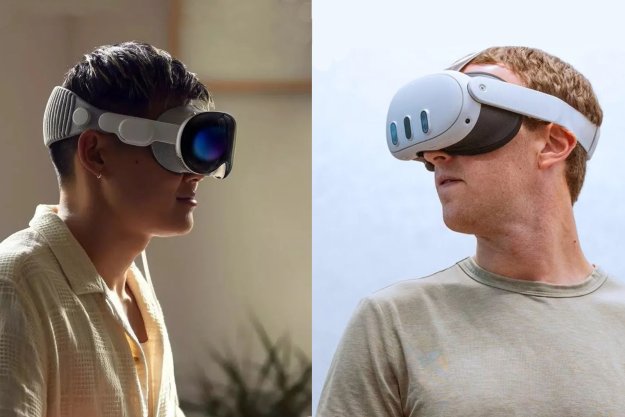
Qualcomm just launched the Snapdragon XR2+ Gen 2, a new spatial computing processor that will power Samsung’s XR headset that will compete with Apple’s Vision Pro. The key features are support for super-sharp displays, multi-camera tracking, and a boost in performance to meet the challenging hardware demands of an immersive workspace.
Qualcomm is the leading supplier of XR chips for a variety of manufacturers and led the way with the first mixed reality VR headsets featuring color passthrough, like the Meta Quest Pro, HTC Vive XR Elite, and Pico 4 Enterprise. Moving into spatial computing, however, takes even more processing power.
Compared to the maximum 3K-per-eye resolution of the Snapdragon XR2 Gen 2, the new plus variant (Snapdragon XR2+ Gen 2) supports up to four times as many display pixels at 4.3K-per-eye, which is twice the image sharpness for each eye at 90Hz. That makes a difference when viewing multiple virtual screens with text and detailed, immersive content. The resolution can be tuned for higher frame rates if needed. For example, a 120 Hz refresh rate is possible at 3.7K-per-eye.
The Snapdragon XR2+ Gen 2 can process 12 cameras to accurately track your environment, head, hands, and eyes, and supports multiplexing to handle more if needed. That should allow perfect synchronization of your movements with virtual objects for a convincing mixed reality experience and the ability to identify subtle hand gestures.
To process these hardware challenges, Qualcomm increased the GPU frequency by 15% and boosted the CPU clock by 20%. With improved performance, more than 4K graphics resolution at 90Hz, and support for 12 or more tracking cameras, XR headsets based on this chip have enough processing power to make for compelling spatial computing headsets.

Qualcomm said more than five manufacturers are working on new headsets with the Snapdragon XR2+ Gen 2. Samsung and Google are partnering on an Apple Vision Pro challenger. HTC and Immersed, a virtual desktop app developer, are also in progress on headsets with the Snapdragon XR2+ Gen 2.
Qualcomm’s latest announcement follows a string of impressive new processors, including the Snapdragon XR2 Gen 2 chip used in Meta’s Quest 3 VR headset, the Snapdragon AR1 Gen1 in the Ray-Ban Meta Smart Glasses, and the Snapdragon X Elite for Windows laptops that combines efficiency and performance to compete well against Apple’s M3 MacBook Pro.
Samsung’s rival to the Vision Pro is still unannounced, but clearly the fight for spatial computing is on, and the Snapdragon XR2+ Gen 2 will play an important role.
Editors' Recommendations
- 5 headsets you should buy instead of the Vision Pro
- This new VR headset beats the Vision Pro in one key way and is half the price
- Vision Pro 2: everything we expect from the future of Apple’s headsets
- Apple’s next Pencil may work with the Vision Pro headset
- Does the Apple Vision Pro come with a battery?



